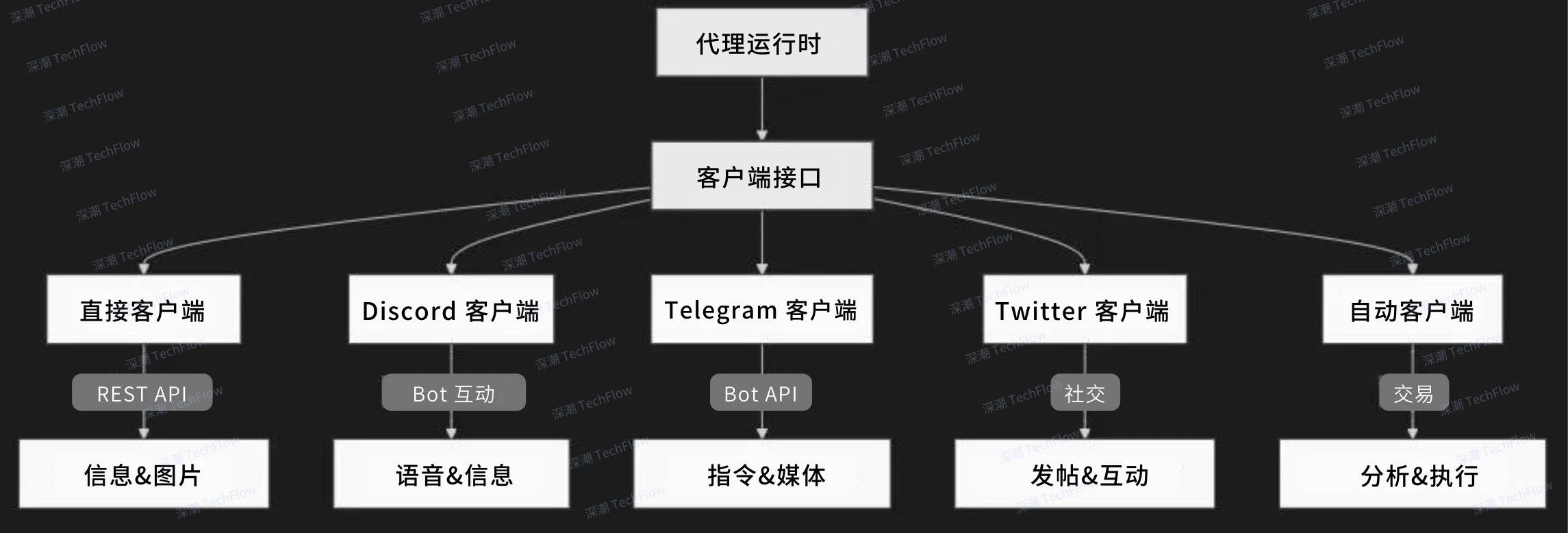From Elizas Github repository, see the advantages and disadvantages of AI frameworks
原作者: Reforge
原文翻譯:TechFlow

Framework Overview
Data as of January 12, 2025
-
Latest version/release: v 0.1.8+build.1 (January 12, 2025)
-
GitHub repository: Eliza
-
License: Open Source MIT License
-
Primary language: TypeScript
-
Statistics:
-
11,200 stars
-
3, 100 forks
-
366 Contributors
介紹
Eliza is an open source agent development framework that aims to make building AI agents easier, more powerful, and more flexible. Does it really live up to the hype? In this post, we’ll take a deep dive into Eliza’s strengths, limitations, and things to watch out for in real-world use.
Eliza’s Positioning
-
Framework goal: To provide a one-stop tool for developing personalized, multimodal AI agents that can handle complex tasks.
-
Main application scenarios: including AI assistants, social media roles, knowledge workers, and interactive virtual characters.
-
Core features:
-
Modular runtime: supports registration operations and plug-ins to facilitate functional expansion.
-
Cross-platform deployment: compatible with multiple platforms such as X (formerly Twitter), Discord, Telegram, etc., supporting a wide range of application scenarios.
-
Character-driven customization: Highly personalized agents are achieved through detailed character profiles (such as background stories, knowledge bases, tone of voice, etc.).
-
Multimedia processing capabilities: Supports the processing of multimodal data such as text, video, and images.
-
Reasoning function: Supports local and cloud reasoning to adapt to different deployment environments.
-
Retrieval-augmented generation (RAG): provides long-term memory and context-awareness capabilities through external data sources and knowledge bases.
From the functional description, Eliza is a versatile agent development platform. But how does it perform in actual applications?
Elizas actual abilities
-
Character Customization: Eliza offers a powerful character system that allows users to create agents with unique voices, styles, and backstories.
-
This makes Eliza particularly useful for building a narrative-driven virtual assistant or maintaining a consistent brand tone of voice.
-
Users can flexibly adjust the personalized performance of the intelligent agent by setting attributes such as the characters personal profile, background story, knowledge points and tone.
-
Cross-platform integration: Eliza supports seamless integration with platforms such as Discord, Slack, and Telegram, allowing the agent to adapt to different community interaction needs.

-
For example, social media bots and customer service agents can be easily deployed across platforms and work together to improve efficiency.
Overview of the client package architecture (Source: Eliza Docs). The original image is from Reforge and compiled by TechFlow.
-
Extensible plug-in system: Eliza provides rich plug-in support, and users can extend functions according to their needs, such as text-to-speech, image generation, and blockchain data retrieval.
-
For example, in a market analysis scenario, users can use plug-ins to obtain real-time data and generate high-quality comments or insights.
-
Retrieval-augmented generation (RAG): This feature enables the agent to generate more accurate answers based on external data sources and knowledge bases.
-
For example, a marketing analysis robot can improve service quality by integrating external documents and caching mechanisms to provide contextually relevant and fast responses.
-
Trusted Execution Environment (TEE) support: Eliza provides a layer of security that allows agents to process sensitive data and workflows, ensuring the safety and reliability of critical tasks.
Elizas shortcomings
Lack of adaptive learning
-
Static character configuration: Eliza’s character personality configuration is pre去中心化金融ned and cannot be dynamically adjusted based on the user’s real-time interactions or historical conversations. This means that the agent may appear “stereotyped” over long periods of use and cannot change based on user needs.
-
Unable to learn from feedback: Currently, Eliza has no mechanism to learn from user corrections or feedback, nor can it adjust its behavior based on previous mistakes. This lack of adaptive learning can cause the agent to repeatedly make the same mistakes or provide responses that do not meet user expectations.
Lack of hierarchical planning capabilities
-
No subtask decomposition function: Eliza cannot decompose complex high-level goals into multiple small tasks. For example, in a scenario where multiple literature research and multiple paragraphs of content need to be summarized, Eliza will be unable to do it. Hierarchical planning usually requires goal decomposition and subtask allocation functions, but Eliza does not have these capabilities built in. Developers need to integrate the task planning library to make up for this deficiency.
Limited ability for agents to collaborate
-
Lack of coordination mechanisms: Although Eliza supports multi-room and multi-user environments, it does not have dynamic collaboration capabilities between agents. Agents cannot share contextual information, assign tasks, or resolve conflicting goals, which is particularly limiting in scenarios that require multiple agents to work together.
Limitations of memory function and contextual processing
-
Basic key-value storage: Eliza’s memory system simply stores data but fails to prioritize recent or more relevant contextual information. During long conversations, the agent may forget key details, resulting in a lack of coherence in the conversation.
-
Lack of memory cleaning mechanism: Eliza does not have a built-in memory cleaning function to automatically remove outdated or irrelevant data. This will cause the memory system to gradually bloat, which not only reduces performance but also may generate irrelevant answers.
Inadequate error handling capabilities
-
Basic API error handling: When an external service fails, Eliza will only return an error message without trying to switch to an alternative data source. A more complete error recovery mechanism, such as switching to a secondary option when a service fails, will significantly improve system stability and user experience.
Lack of true multimodal intelligence
-
Insufficient cross-modal capabilities: Although Eliza supports some multimodal plug-ins (such as text-to-speech and image generation), it cannot combine multiple inputs such as text, images, and audio for unified analysis and reasoning. For example, Eliza cannot process visual data and text input at the same time, which limits its application potential in multimodal scenarios.
Eliza is best suited for use cases
-
市場 intelligence agents: They can help companies track user sentiment trends, analyze hot topics on social media, and generate real-time automated responses. This type of agent is particularly suitable for marketing or brand management work that requires rapid response.
-
Content generation bots: Generate consistent branded content, such as regular posts or advertising messages, across multiple social platforms. These bots ensure a consistent brand tone while reducing the workload of manual operations.
-
Customer support robots: Based on a well-organized knowledge base, they provide users with fast and accurate answers, especially suitable for handling frequently asked questions (FAQs). These robots can not only provide scripted responses based on the context, but also improve the user experience through personalized role design, consistent with brand culture.
總結
Eliza provides a flexible and extensible framework that is very suitable for developing character-centric agents, especially in simple or scripted workflows. It has obvious advantages in creating virtual characters that are consistent across platforms, but due to the lack of learning capabilities and strategic planning functions, it cannot be called a true autonomous agent development framework.
If the users goal is to build an intelligent agent that can adapt to the environment, collaborate, or process complex logic, the development team needs to do a lot of secondary development based on Eliza. This means that for those application scenarios that require efficiency and practicality, its core value is more reflected in the development of customized functions rather than the native capabilities of the framework itself.
It should be noted that Eliza should not be considered a comprehensive agent development framework at this stage. Compared with its counterparts in the Web2 field (such as Langchain , Autogen , Letta , etc.), its functions still have a certain gap. Elizas real advantage lies in role-driven automated applications, but it is still in its early stages in achieving true autonomous agent development and can only meet some basic needs.
This article is sourced from the internet: From Elizas Github repository, see the advantages and disadvantages of AI frameworks
1. Popular currencies on CEX CEX top 10 trading volume and 24-hour rise and fall: BTC: -3.0% ETH: -3.6% XRP: -5.2% SOL: -4.0% DOGE: -5.8% PEPE: -4.3% SUI: -4.9% PENGU:+ 0.1% BNB: -2.0% TRX: -1.1% 24-hour price increase list (data source: OKX): OMI: +17.34% PRO: +13.54% SWFTC: +10.01% MEMEFI: +9.17% UXLINK: +8.89% QL: +8.49% SWEAT: +8.39% OKT: +7.96% ULTI: +6.73% MORPHO: +5.37% 2. Top 5 popular memes on the chain (data source: GMGN): MIRA PENGU DALMATIAN SVMAL QOAT 3. Todays most searched currencies MIRA: MIRA ( RufNM…cRE ) is a meme coin on Solana, with a market value of over $40 million two hours after its launch. It is reported that the meme coin was created anonymously and half of the supply was sent to the father of a girl…








